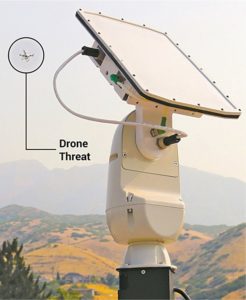 In an era where drones are becoming increasingly ubiquitous, their potential for misuse has grown correspondingly. From corporate espionage to unauthorized surveillance, the threat posed by these aerial intruders necessitates robust anti-drone systems. This guide explores the various methods and technologies used to detect, track, and neutralize malicious drones, ensuring the safety and security of sensitive environments.
In an era where drones are becoming increasingly ubiquitous, their potential for misuse has grown correspondingly. From corporate espionage to unauthorized surveillance, the threat posed by these aerial intruders necessitates robust anti-drone systems. This guide explores the various methods and technologies used to detect, track, and neutralize malicious drones, ensuring the safety and security of sensitive environments.
Understanding the Threat Landscape
Drones, or unmanned aerial vehicles (UAVs), have legitimate uses in industries such as logistics, agriculture, and entertainment. However, their ability to bypass traditional security measures makes them attractive tools for malicious actors. Unauthorized drones can capture sensitive data, deliver contraband, or even serve as a platform for cyber-attacks. A particularly insidious threat is the use of drones as rogue Wi-Fi hotspots, tricking unsuspecting individuals into connecting and compromising their devices.
Detection and Identification
The first step in countering drone threats is effective detection and identification. Anti-drone systems employ a variety of technologies to identify UAVs. Radar systems can detect drones at long ranges, while radio frequency (RF) scanners identify communication signals between drones and their controllers. Acoustic sensors pick up the unique sounds of drone rotors, and optical sensors use cameras and advanced image processing to visually confirm drone presence.
Tracking and Monitoring
Once detected, drones need to be tracked continuously to assess the threat and determine the appropriate response. Multi-sensor fusion techniques combine data from radar, RF, acoustic, and optical sensors to provide comprehensive situational awareness. Machine learning algorithms enhance tracking accuracy by predicting drone trajectories and distinguishing between benign and malicious behavior.
Neutralization Techniques
 Neutralizing a hostile drone involves various strategies, depending on the threat level and operational constraints. RF jamming disrupts the communication link between the drone and its operator, causing the drone to lose control and often triggering its fail-safe mechanisms to land or return home. GPS spoofing sends false signals to the drone’s navigation system, leading it away from restricted areas. For high-risk scenarios, directed energy weapons such as lasers can physically disable drones by damaging their critical components.
Neutralizing a hostile drone involves various strategies, depending on the threat level and operational constraints. RF jamming disrupts the communication link between the drone and its operator, causing the drone to lose control and often triggering its fail-safe mechanisms to land or return home. GPS spoofing sends false signals to the drone’s navigation system, leading it away from restricted areas. For high-risk scenarios, directed energy weapons such as lasers can physically disable drones by damaging their critical components.
Legal and Ethical Considerations
Deploying anti-drone systems involves navigating a complex web of legal and ethical issues. Laws regarding airspace, privacy, and property rights vary by jurisdiction. Organizations must ensure their anti-drone measures comply with local regulations and respect individuals’ privacy rights. Ethical considerations also include minimizing collateral damage and ensuring that countermeasures do not pose undue risks to bystanders or legitimate UAV operations.
Integrating Anti-Drone Systems
For maximum effectiveness, anti-drone systems should be integrated into a broader security framework. This includes collaboration with law enforcement, adopting cybersecurity measures to protect against drone-enabled cyber-attacks, and implementing standard operating procedures for drone incidents. Regular training and drills ensure that security personnel are prepared to respond swiftly and effectively to drone threats.
Case Studies
Several high-profile incidents highlight the importance of robust anti-drone measures. For example, drones have been used to smuggle contraband into prisons, disrupt major sporting events, and conduct unauthorized surveillance of critical infrastructure. These cases underscore the need for comprehensive detection, tracking, and neutralization strategies to safeguard against the diverse range of threats posed by rogue drones.
Future Trends in Anti-Drone Technology
The field of anti-drone technology is rapidly evolving. Artificial intelligence (AI) and machine learning are enhancing detection and response capabilities, allowing systems to adapt to new drone technologies and tactics. Quantum cryptography promises to secure communication channels against drone-enabled cyber-attacks. The development of counter-swarm tactics aims to neutralize multiple drones simultaneously, addressing the growing threat of coordinated drone swarms.
Recommendations for Organizations
Organizations looking to protect against drone threats should adopt a multi-layered approach. This includes investing in advanced detection and tracking technologies, integrating anti-drone measures into existing security protocols, and staying informed about legal and regulatory developments. Collaboration with industry experts and continuous training for security personnel are also crucial for maintaining an effective defense against evolving drone threats.
Conclusion
The rise of drones brings significant benefits but also substantial risks. By understanding the threat landscape and implementing comprehensive anti-drone systems, organizations can protect their assets and ensure the safety of their operations. As technology advances, staying ahead of drone threats will require ongoing vigilance, innovation, and cooperation across the security community.























































